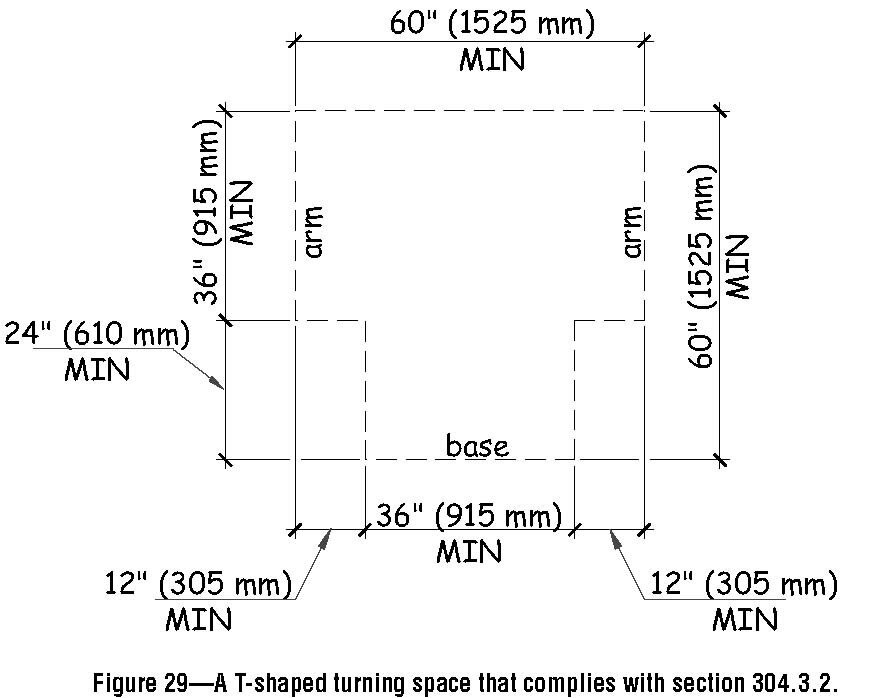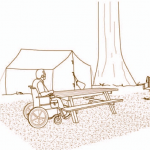Definition [F106.5]
A viewing area is an outdoor space developed for viewing a landscape, wildlife, or other points of interest.
Distinct Viewing Locations [F246.2, 1015.2, and 1015.3]
Viewing areas often provide more than one distinct viewing location. For example, a viewing area can provide a distinct viewing location for observing a mountain range and another distinct viewing location for observing a river. Distinct viewing locations within a viewing area don’t have to be identified, but may be designated by signs or other markers.
A clear ground space at least 36 by 48 inches that is positioned for either a forward or parallel approach must be provided at each distinct viewing location. One full, unobstructed side of the clear ground space must adjoin or overlap an ORAR or trail, as applicable, or another clear ground space.
Each distinct viewing location must provide a viewing space that is adjacent to the clear ground space through which the point of interest may be viewed. The viewing space must be free and clear of obstructions between 32 and 51 inches above the ground and must extend the full width of the clear ground space.
Guards or similar safety barriers can obstruct the viewing space only to the extent that the obstruction is necessary for the guard or other safety barrier to serve its intended purpose. See-through panels may be used to provide safety while still allowing a person using a mobility device or a person of short stature to view the point of interest.
Turning Space [1015.4]
A turning space at least 60 inches in diameter or a T-shaped space with an arm at least 60 by 36 inches and a base at least 36 inches wide by 24 inches long (figure 29) must be provided within the viewing area to allow people using mobility devices to turn around.
Surface and Slope [1015.5 and 1015.6]
The surface of clear ground spaces and turning spaces must be firm and stable. Additional information on firm and stable surfaces is provided in the trails section of this guide.
When the surface of clear ground spaces and turning spaces is constructed of asphalt, concrete, or boards, the slope of the surface must be no steeper than 1:48 (2 percent) in any direction. When the surface is constructed of materials other than asphalt, concrete, or boards, slopes no steeper than 1:20 (5 percent) are allowed when necessary for drainage.
Outdoor Constructed Features Within Viewing Areas [F246.3]
At least 20 percent, but no less than one, of each type of outdoor constructed feature provided within each viewing area must comply with the applicable technical requirements for the feature. The technical requirements for outdoor constructed features, including viewing scopes, are located in the section of this guide on outdoor constructed features.
Outdoor Recreation Access Routes in Viewing Areas [F246.4]
At viewing areas not located along trails, at least one ORAR must connect accessible parking spaces or other arrival points that serve the viewing area with accessible elements, spaces, and facilities provided within the viewing area. Additional information on the scoping and technical requirements for ORARs at viewing areas are discussed in the section of this guide on ORARs.






